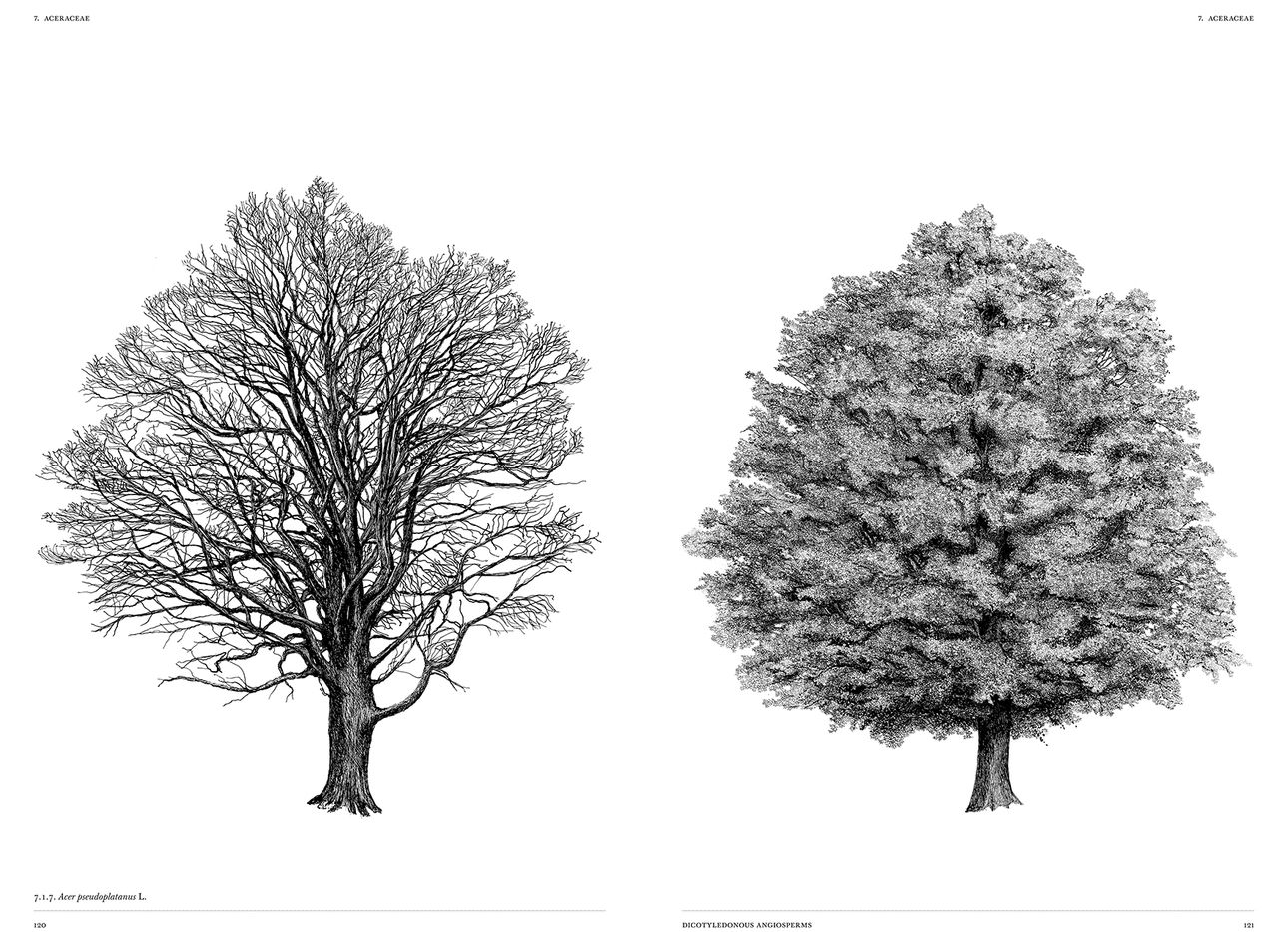
The Natural World, in Book Form
Long summer days make for more time spent outdoors, in these precarious times at a safe social distance. Especially when we’re cooped up indoors, the next hike or laze in a tree-lined park is never far from our minds—and on our reading lists.
Originally published in 1982 and recently brought back into print, The Architecture of Trees (Princeton Architectural Press) by Italian architect-designers Cesare Leonardi and Franca Stagi is a stunning atlas and visual ode to arboreal splendor. The large-format volume catalogues more than 200 species of trees, each drawn in intricate quill-pen illustrations at 1:100 scale, and even comes with a handy paper ruler, to aid your identification of them in the wild. In her new book, Tree Story: The History of the World Written in Rings (John Hopkins University Press), climate scientist Valerie Trouet offers a window into the world of dendrochronology (tree-ring research), sharing field studies from around the world, and explaining how the discipline has contributed to our understanding of climate history.
Trees are sensuous subjects of awe and of lyric poetry in The Songs of Trees: Stories From Nature’s Great Connectors (Penguin), by biologist David G. Haskell, who visits a dozen trees around the world, marveling at each with the meditative and watchful eyes and ears of an environmental scientist. Standing beneath a Ceiba pentandra near the center of the Yasuní Biosphere Reserve, in Ecuador, “The rain falls in big syllables, phonemes unlike the clipped rain speech of most other landmasses,” he writes. “I feel inverted, like an image in a teardrop, disoriented by hearing forest rain under my soles.”
For even deeper reading on the wonders of the natural world, we highly recommend Entangled Life: How Fungi Make Our Worlds, Change Our Minds, and Shape Our Futures (Random House) by biologist Merlin Sheldrake, with whom recently spoke on Ep. 44 of At a Distance; Robert Macfarlane’s Underland: A Deep Time Journey (W. W. Norton), which explores the Earth’s various, multilayered underworlds through myth, literature, memory, and nature; and Richard Powers’s evocative, masterful Pulitzer Prize–winning novel The Overstory (W. W. Norton).